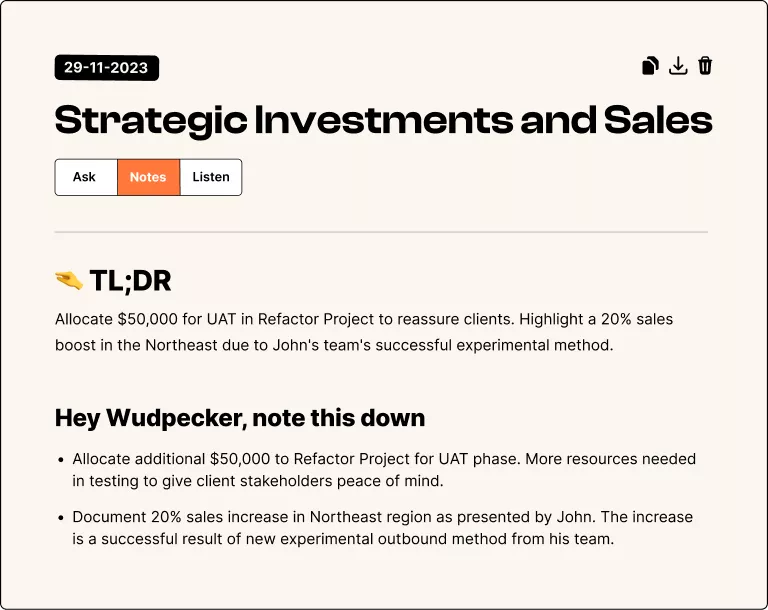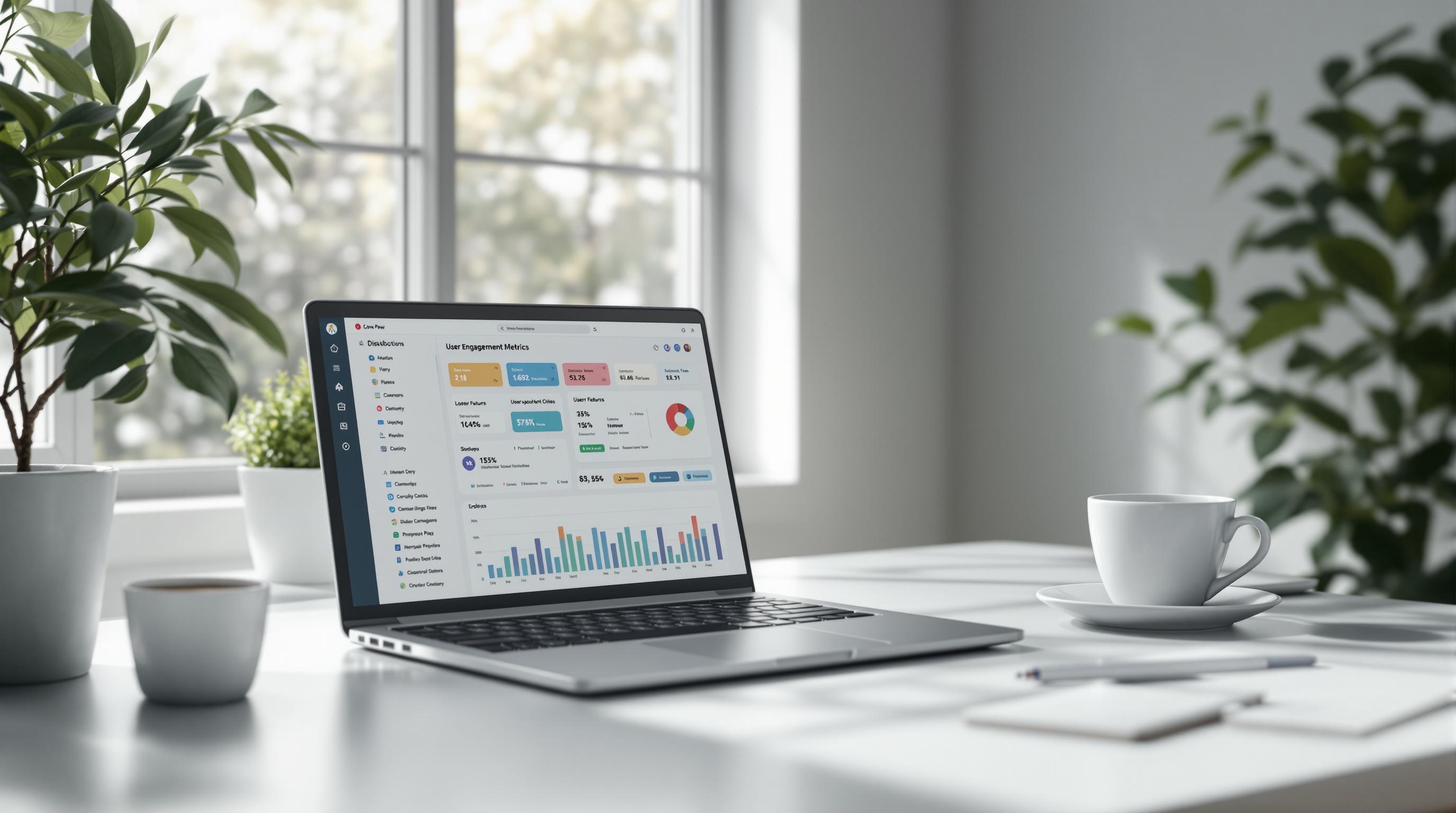Want to reduce churn, spot upsell opportunities, and improve your product? User engagement scoring is the key.
This guide explains how B2B SaaS companies can measure and improve engagement by analyzing user behavior. Here's what you'll learn:
- Why it matters: Engagement scoring helps identify churn risks, prioritize product updates, and find upsell opportunities.
- Key metrics to track: Feature usage, daily active users, team collaboration, and administrative actions.
- Scoring models to use: RFM (Recency, Frequency, Monetary), HEART (Happiness, Engagement, Adoption, Retention, Task Success), and PQL (Product Qualified Leads).
- How to build a system: Assign metric weights, apply time decay, and set thresholds to track engagement effectively.
- Actionable insights: Use scores to reduce churn, identify growth opportunities, and guide product development.
With the right framework, you can turn user data into actionable insights to grow your business and help customers succeed.
Heart Framework: Choosing the Right Metrics for User ...

Creating Your Scoring Framework
Design an engagement scoring system that fits your B2B SaaS business. This framework helps measure engagement levels and provides actionable insights for your team.
Choosing Key Metrics
Focus on metrics that highlight product value and user adoption. Start with these main categories:
| Metric Category | Key Indicators | Impact |
|---|---|---|
| Feature Usage | Core feature adoption rate, advanced feature usage | Reflects product maturity and fit |
| User Activity | Daily active users (DAU), session length | Indicates platform engagement |
| Team Collaboration | Cross-team interactions, shared workspace use | Shows organizational-level adoption |
| Administrative Actions | User management, custom configurations | Demonstrates commitment to the platform |
Pick metrics that align with your software’s main purpose. For example, if your product emphasizes team productivity, focus on collaborative features rather than individual usage trends for clearer insights.
After identifying metrics, assign weights to show their importance in the overall score.
Setting Metric Weights
Weights determine how much influence each action has on the engagement score. To set these:
- Strategic Value: Link weights to your business goals and customer success measures.
- Usage Frequency: Balance how often an action occurs with its importance.
- Customer Feedback: Use insights from users to guide weight assignments.
Organize actions into tiers based on their importance:
| Action Type | Weight Range | Example Actions |
|---|---|---|
| Critical | 8–10 | Core feature usage, team onboarding |
| Important | 5–7 | Custom report creation, data exports |
| Supporting | 2–4 | Profile updates, optional features |
| Basic | 1 | Login frequency, page views |
This approach ensures the score reflects what truly matters. Add time decay factors to keep the scoring current.
Adding Time Decay
Time decay ensures the score reflects recent activity. Use decay factors that match your product’s usage patterns:
| Time Period | Decay Factor | Purpose |
|---|---|---|
| Last 7 days | 1.0 | Full value for recent actions |
| 8–30 days | 0.7 | Gradual reduction in importance |
| 31–90 days | 0.4 | Significant decrease in weight |
| 90+ days | 0.1 | Minimal impact on the current score |
Customize these decay rates based on how often users typically engage with your product. For instance, if your software is used monthly, align decay factors with monthly cycles instead of weekly ones.
Common Scoring Models
Once you've set up your engagement framework, you can build on it by using tried-and-tested scoring models designed for B2B SaaS. These models provide structured ways to measure and understand engagement.
RFM Scoring
RFM scoring can be adapted for B2B by focusing on these elements:
- Recency: Track how many days have passed since the last team login. Give more weight to accounts with activity in the past 7 days.
- Frequency: Look at the ratio of weekly active users to highlight accounts with consistent usage across the organization.
- Monetary: Instead of financial spending, focus on how deeply features are being adopted. This helps identify accounts utilizing their subscription to its fullest.
This approach shifts the emphasis from transaction value to feature usage, offering a clearer picture of engagement.
HEART Framework
Developed by Google, the HEART framework evaluates product engagement through five key metrics:
- Happiness: Measure team satisfaction using tools like Net Promoter Scores (NPS) or analyzing support ticket sentiment.
- Engagement: Track weekly active users per account and session depth to understand usage patterns.
- Adoption: Compare the use of core features to advanced features to gauge how the product is being implemented.
- Retention: Observe account stability by monitoring growth in user bases across accounts.
- Task Success: Assess how well teams complete key workflows, using metrics like workflow completion rates or time-to-value.
For B2B SaaS, focusing on team-level metrics - rather than individual user behavior - offers better insights into how groups are using the product collaboratively.
PQL Scoring
Product Qualified Lead (PQL) scoring highlights high-potential accounts by analyzing actual product usage. Build your PQL framework around these indicators:
- Account Growth: Track how quickly user numbers grow within an account.
- Feature Adoption: Measure the depth of core feature usage to gauge how much value users see in the product.
- Team Engagement: Assess activation across multiple departments to understand overall organizational involvement.
- Administrative Activity: Check for configuration completeness as a sign of thorough product integration.
Accounts with more than 80% core feature adoption across departments often indicate a strong fit between the product and the organization, as well as significant growth potential. Use historical data to set clear thresholds and prioritize these high-value accounts.
sbb-itb-6285ddb
Setting Up Your Scoring System
Once you've built your scoring framework, the next step is putting it into action. This means setting clear thresholds, regularly analyzing data, and making updates to keep everything accurate and relevant.
Choosing Metrics and Setting Thresholds
Pick metrics that highlight your product's main value:
- Adoption %: Tracks how much users engage with specific features.
- Session patterns: Shows how different user roles interact with the platform.
- Workflow completion rates: Indicates how effectively users achieve their goals.
- Team interactions: Reflects how widely the platform is used within an organization.
Set thresholds based on data from your best-performing accounts. For example, if top accounts have 75% of their team using the platform weekly, use this as a benchmark for high engagement.
| Engagement Level | Feature Adoption | Weekly Active Users | Task Completion |
|---|---|---|---|
| High | >75% | >80% of seats | >90% |
| Medium | 50-75% | 50-80% of seats | 70-90% |
| Low | <50% | <50% of seats | <70% |
Once you've set these thresholds, ensure you have reliable data collection processes in place to track and validate these metrics.
Collecting and Analyzing Data
Track engagement points across your platform to gather insights. Tools like Userlens can help by visualizing activity through heatmaps, showing both individual usage and overall feature adoption.
Focus your analysis on three main areas:
- User-level metrics: Look at individual activity and feature usage.
- Account-level patterns: Assess team-wide adoption and collaboration trends.
- Time-based trends: Monitor weekly and monthly changes in engagement.
Regularly reviewing this data helps you fine-tune your scoring system to match how users interact with your product.
Keeping Your Scoring System Up to Date
Update your scoring system every quarter by:
- Reviewing how engagement scores align with customer outcomes.
- Adjusting weights and thresholds as user behaviors change.
- Including metrics for any new features you've introduced.
For example, if accounts with 60% feature adoption now show strong retention (where the previous benchmark was 75%), update your scoring tiers to reflect this shift. This keeps your scoring system in sync with real-world user success.
Applying Engagement Scores
With your scoring system ready, use engagement scores to spot risks and uncover growth opportunities.
Reducing Customer Churn
Track engagement patterns to pinpoint accounts that may be at risk. Look out for:
- A noticeable drop in usage (like fewer weekly active users)
- Declining adoption of core features
- Decreased interactions within teams
Set up alerts for these signs, triggering actions like check-in emails or customer success calls. Tools like Userlens's activity dots make it easy to visualize user behavior and spot trends that could indicate potential churn. Pay extra attention when key users or power users show decreased activity - this often signals broader disengagement across the account.
While reducing churn is essential, high engagement can be a sign of growth potential too.
Finding Upsell Opportunities
Strong engagement often suggests readiness for upgrades. Key signs include:
- Heavy feature usage
- Collaboration across departments
- Regular workflow completions
- Teams nearing their plan’s capacity
By monitoring feature use, you can identify natural opportunities for expansion. For instance, if teams are consistently hitting their plan limits or asking for advanced features, it may be the ideal time to discuss an upgrade.
Product Development Insights
Engagement scores can guide product improvements. Focus on features with high adoption, study how different roles use the product, and identify any workflow challenges. Userlens's activity dots provide clear visuals of user behavior, helping you spot these trends.
These insights can shape your product roadmap. If certain features consistently drive engagement, consider enhancing them or creating complementary tools to amplify their impact.
Conclusion
Main Points
Engagement scoring plays a key role in the success of B2B SaaS companies. A strong framework helps uncover risks and opportunities by analyzing user interactions that matter. Here are the essential components for effective engagement scoring:
- Metrics: Choose metrics that align with your product's core values and customer success objectives.
- Scoring Models: Use models like RFM or HEART, depending on your business needs.
- Regular Updates: Adjust scoring thresholds as user behavior evolves.
- Action Triggers: Set up automated alerts for both positive and negative engagement trends.
Engagement scoring isn't just about numbers - it provides insights into user behavior and helps guide meaningful actions. Use these principles to kick off your engagement scoring system.
Getting Started
Here’s a quick checklist to help you put your engagement scoring system into action:
-
Define Success Metrics
- Pinpoint 3–5 key success actions.
- Establish baseline engagement thresholds.
- Document your methodology.
-
Track Data
- Monitor and validate critical user interactions.
- Set up a regular review process.
-
Implement Scoring Logic
- Develop scoring rules.
- Test the scoring system with historical data.
- Automate alerts for significant trends.
-
Enable Action Plans
- Create response strategies for different score ranges.
- Train your team to interpret and act on score insights.
- Schedule regular reporting and updates.
Start with a pilot run to fine-tune your system and ensure it meets your business goals.
Related posts



.svg)



















.svg)
